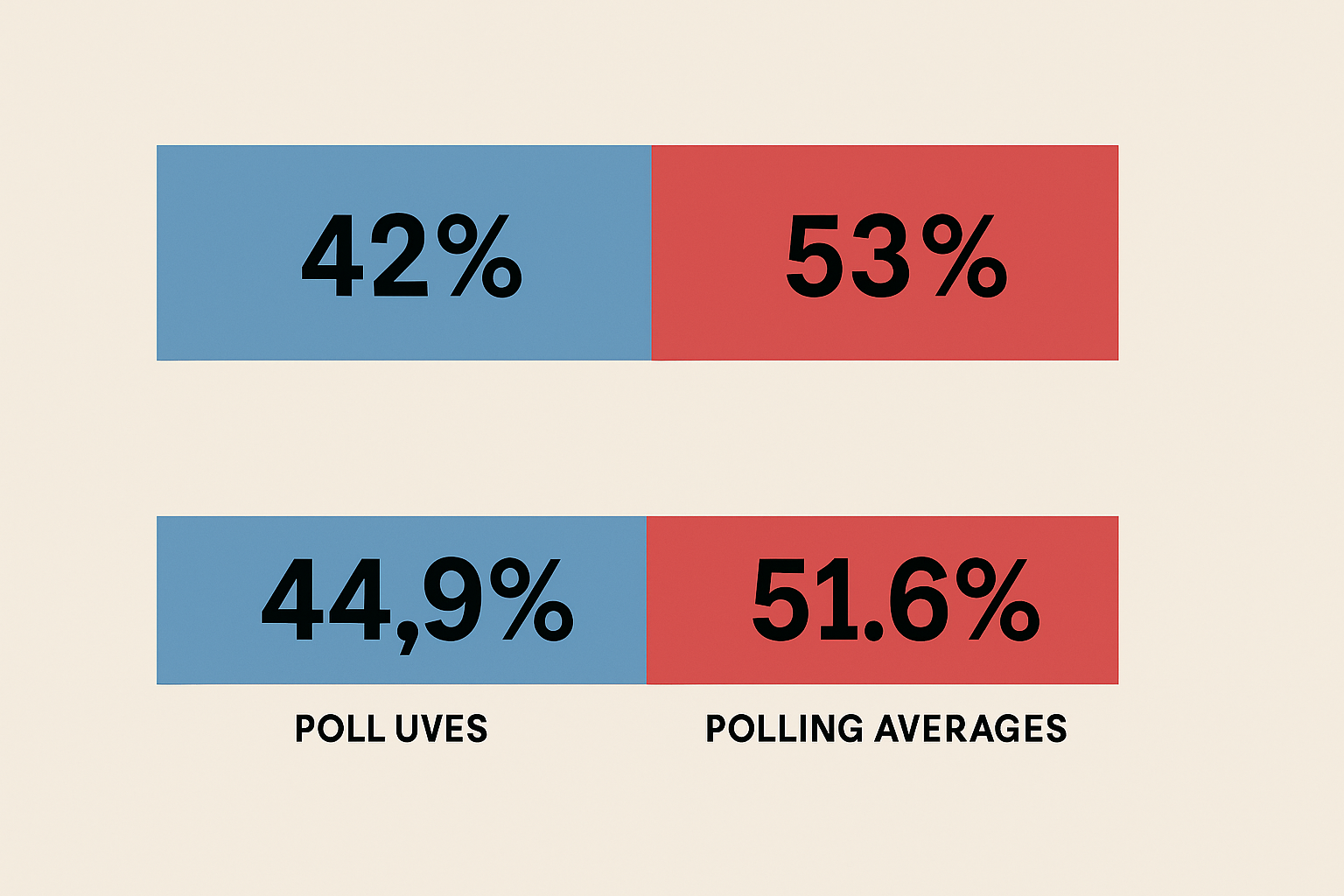President Donald Trump’s approval ratings have shown a slight decline following the passage of his administration’s sweeping tax cut and spending bill on July 3. The legislation, which was signed into law on July 4, has generated significant public and political debate due to major reductions in Medicaid and Medicare funding, while also extending the 2017 tax cuts and increasing the federal budget for immigration enforcement.
Despite the White House portraying the bill as a historic fiscal victory, recent polling data indicates mixed public reception.
Gallup: Historic Low at Six-Month Mark
According to Gallup, Trump holds the distinction of having the lowest six-month average approval ratings for a U.S. president in the modern era. His approval ratings stood at 38% during his first term and 40% during his current term at the six-month point. This is notably lower than the modern presidential average of 52%, which Gallup has tracked since John F. Kennedy’s presidency in 1961.
Individual Polls After the Bill’s Passage
The Economist / YouGov (July 4–7):
- Favorable: 42%
- Unfavorable: 53%
- Not sure: 5%
- Sample size: 1,528 adults
This poll also noted a decline in support among Black voters, showing a drop from 20% approval in June to 15% in July.
Morning Consult (July 3–6):
- Approve: 45%
- Disapprove: 52%
- Sample size: 2,203 registered voters
Rasmussen Reports (July 9):
- Approve: 49%
- Disapprove: 49%
- Sample size: 1,500 likely voters
Rasmussen remains the only poll showing Trump with an even approval-disapproval balance in recent days.
Aggregated Averages
Nate Silver’s Silver Bulletin newsletter released its most recent average on July 9, based on 10 national polls. The results show:
- Approve: 44.9%
- Disapprove: 51.6%
Implications
The immediate dip in Trump’s approval ratings suggests that public reaction to the tax and spending bill is cautious at best. While core supporters may remain loyal, the loss of momentum among key demographic groups—such as Black voters—could pose a challenge for the administration as it prepares for the second half of 2025 and a volatile election season ahead.
The figures also reflect a broader trend: Trump’s approval ratings continue to defy historical norms for presidents at similar points in their terms, highlighting the deep political divisions that characterize his presidency.



